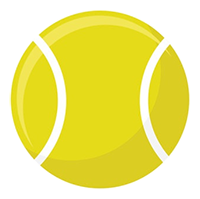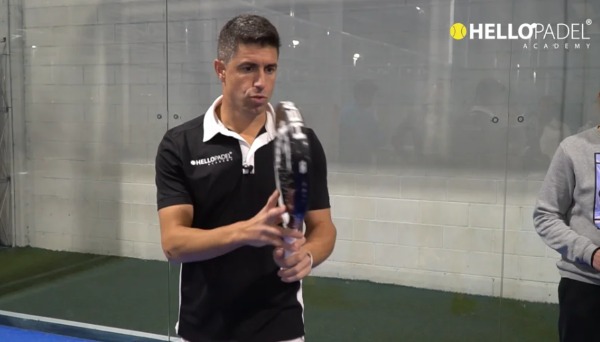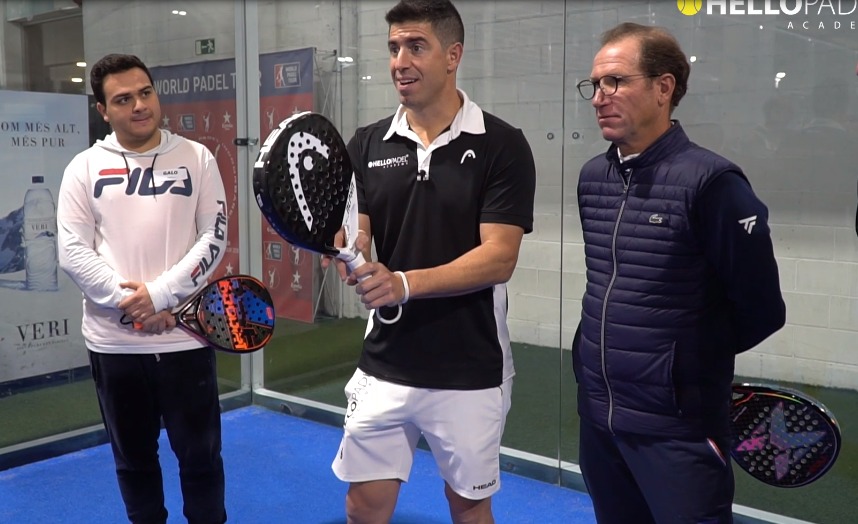1. INTRODUCTION
A person who does not play padel, or even a beginner, probably thinks that the non-playing hand is useless, since the hand and arm with which we hit the ball all the time is the other one.
However, although it is clear that the most important hand in padel is the one that holds the padel racket by the handle, our most skilful hand and the one with the most strength, we should not underestimate the non-dominant hand, as it also has its functions and, if we perform them well, they will help us to improve our strokes.
So, in this article we are going to see how the arm and the non-playing hand intervene in the game and what advantages it gives us.
*By non-playing hand we refer to the hand with which we are less skilled and have less strength, which in the case of right-handed players will be the left hand and in the case of left-handed players will be the right hand.
2. ADVANTAGES OF “CORRECT” USE OF THE NON-PLAYING HAND
– Rest the dominant hand and arm.
Remember that when we play padel we spend more time not playing than actually hitting the ball. This means that if we do not hold the racket with the non-playing hand while we are not hitting the ball, sooner or later we are going to suffer a muscular overload of the forearm muscles and, in the worst case scenario, perhaps even tendonitis.
Holding the bat with the non-dominant hand will allow us to relax the dominant hand and rest the arm with which we hit the ball while we are not playing.
But what is the correct way to hold the racket with the non-playing hand?
The non-playing hand should hold the racket by the heart of the racket, which is the part that is above the handle and widens in the shape of a “V”, with the fingers forming a sort of “C” or with the index finger on the face of the racket.
The non-playing hand should hold the racket firmly, so that if we were to release the dominant hand from the handle of the racket, we would continue to be able to hold and control the racket with our non-dominant hand.
– Change grip.
As the racket is held by our non-dominant hand, the dominant hand can relax and open up enough to be able to turn over the handle and change grip.
– To have the racket well prepared to respond.
When the opponent is about to hit, it is essential to have a good waiting position to be able to react as quickly as possible. Among other things, this means having the racket high and in front of our body. If we get used to always holding the racket with the non-playing hand, it will be, almost without even wanting to, always high and in front of us. On the other hand, in those players who do not hold the racket with the non-playing hand, very often we will see how they have the racket pointing downwards or in a sort of ”dropped” position.
– Helping and improving strokes with the non-playing hand.
Using the non-playing hand correctly in all strokes will allow us to execute them with maximum effectiveness and efficiency.
Next, we are going to see how the non-playing hand intervenes in those strokes in which it has the greatest influence.
- Forehand.
In the forehand stroke, the non-dominant hand acts as a reference, allowing us to locate the ball at each moment of its path and calculate the correct distance at which we should hit it (point of impact).
In addition, by placing the hand in front of our body before hitting, it will make it much easier for us to turn our shoulders, an essential movement so that after hitting the ball the racket can come forward easily while the shoulders rotate again to face the net and the non-dominant hand goes backwards.
If we had the non-dominant hand hanging to the side of the body or on the chest, this would make it difficult or slow down the release of the racket going forward after impact, at the same time as it can also favour the head of the racket to be pointing towards the ground before hitting.
- Forehand volley.
When executing a forehand volley, the non-dominant hand is directed backwards following the preparation or arming of the padel bat, allowing us to generate more force and power in the volley, while also helping us in the rotation of the shoulders.
- Aerial strokes (bandeja, vibora and backhand).
In aerial shots, the non-playing hand acts as a reference point (it helps us to follow the trajectory of the ball), it helps us to calculate the distance and the correct contact point, to make the shoulder turn (otherwise we would tend to be more face on), to help balance ourselves during the movement and to give more power to the shots.
BUT, where the participation of the non-dominant hand is most helpful and important is in the backhand stroke and volley.
- Backhand stroke.
In this stroke the non-playing hand will help us to make a good preparation, to act as a counterweight, to make the movement of the gesture more fluid and rhythmic, to maintain the line and balance and to generate more power in the stroke by producing a whip or action-reaction effect (the dominant arm goes forward (action) at the same time as the non-dominant arm goes backwards (reaction)).
If we didn’t use the non-playing hand, often the termination of the stroke would end up too far to the back or upwards.
- Backhand volley.
This is probably the stroke where our non-playing hand will help us the most.
The non-playing hand will help us to make a good preparation with the head of the racket high. Just at this moment, it is thanks to the non-dominant hand, which holds the racket firmly, that we can generate a tension or a retention of force that, once we release the racket, will act like a spring, being able to give speed to our volley.
And after impact the same thing will happen as with the backhand, the racket and the dominant arm will go forward while the non-dominant arm goes backwards to counteract the forces and maintain a balance.
3. CONCLUSION
Although some people, especially beginners, believe that the non-playing hand is useless except for holding the ball to serve, the truth is that the non-playing hand, as we have seen, has its functions and will provide us with a series of advantages and improvements in our game.
Therefore, the correct use of the non-playing hand should be one of the objectives of the technical work that we carry out in training and should not be forgotten.
And you, are you one of those who use the non-playing hand while playing or are you one of those who could play with the non-playing hand in your pocket? 😉
 Upgrade now
Upgrade now






